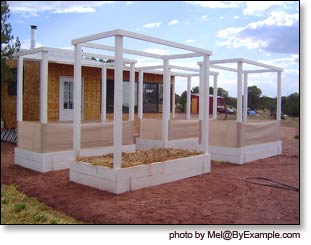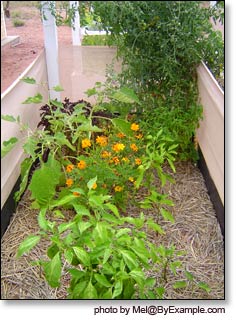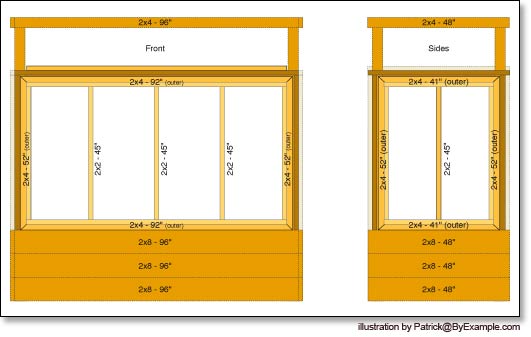Constructing Raised Garden Beds
We conveniently situated our garden between the greenhouse and the barn. After experiencing the severity of the high desert climate, we decided that our best shot at successful outdoor gardening would be with raised garden beds.
Withstanding the Elements
I'm not exaggerating, more than half of the days this year have been exceptionally windy. We're not sure if this is a trend that will be exacerbated by climate change or if it was an anomaly. Either way, we often experience periods of extreme wind, which wreak havoc on plants and knock down trellising. At an altitude of 5500' the sun's intensity is also a concern. Plants often bake in the sun and their fruit is prone to sunburn. Other elements to take into account are hail and pelting rain. We experience hail throughout the year and during monsoon season down-pouring rain can also damage plants.
With all this in mind, we designed raised garden beds that are framed out to 8' feet high. Shade cloth, wind barriers and trellising materials can be easily attached the sturdy frames. In addition, our first set of six garden beds are aligned so that a large piece of shade cloth can be spanned over the top.


Constructing Raised Garden Beds
Each of the 4' x 8' raised beds are constructed from pine lumber that has been sanded, primed and painted with exterior house paint. The interior of the raised beds are protected with a lining of heavy black plastic. At present the raised garden beds are 16" deep, though we may increase the depth by adding another 2" x 8" board. The corner posts are 4" x 4" and are connected at the top by a 2" x 4" frame. Four stakes driven into the ground abut each of the garden beds and are used to secure the beds in place.
Building Soil for Garden Beds
By far the toughest part of the job has been creating fertile soil to fill each of the raised garden beds. We experimented with strawbale planting and filled several of the garden beds with whole bales. All in all we were not pleased with the results. We achieved superior results by mixing local sand with goat manure from a nearby farm along with composted kitchen scraps and straw. Future garden beds will rely on manure created by our breeding rabbits and organic material from cover crops.


Planting, Harvest & Seed Saving in Raised Beds
Planting and harvesting in raised beds is a lot easier on the body than working in a garden that has been sown directly in the ground. There is a lot less kneeling and bending over, which makes gardening a lot more enjoyable.
Another issue we've had with our in-ground beds are mischievous cats. The raised beds are less susceptible to attack and are easier to protect. In fact, we are designing hardware cloth panels that can be attached to the garden bed frames.
In future years we hope to practice seed saving. We will be making screen panels that attach to each of the frames to prevent cross pollination by roaming insects.
Cold Frames for Raised Beds
With winter approaching we are also designing panels that can be attached to our garden beds to act as cold frames. With this method we hope to extend our growing season at least be several months and possibly through the entire winter.
Click here to download a PDF version of our raised garden bed plans.
Click here to download a PDF version of our raised garden bed plans with cold frame attachments.
Garden Fence
We recently installed a garden fence. Click here to read more about garden fencing and how to build a fence.
More About Our Garden
Planning Our Garden
Making Garden Soil
Cold Frame Design
Heirloom Seeds
